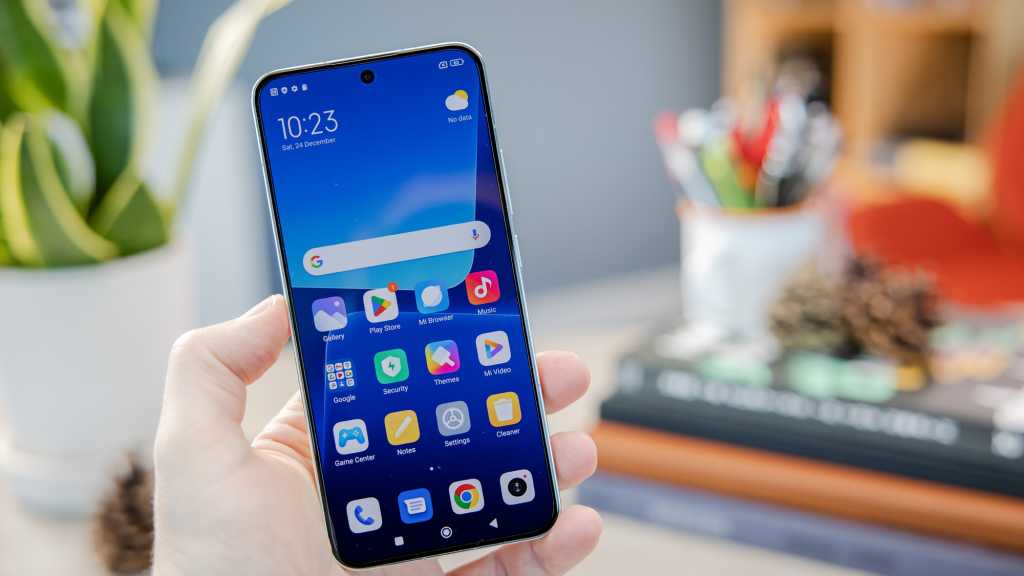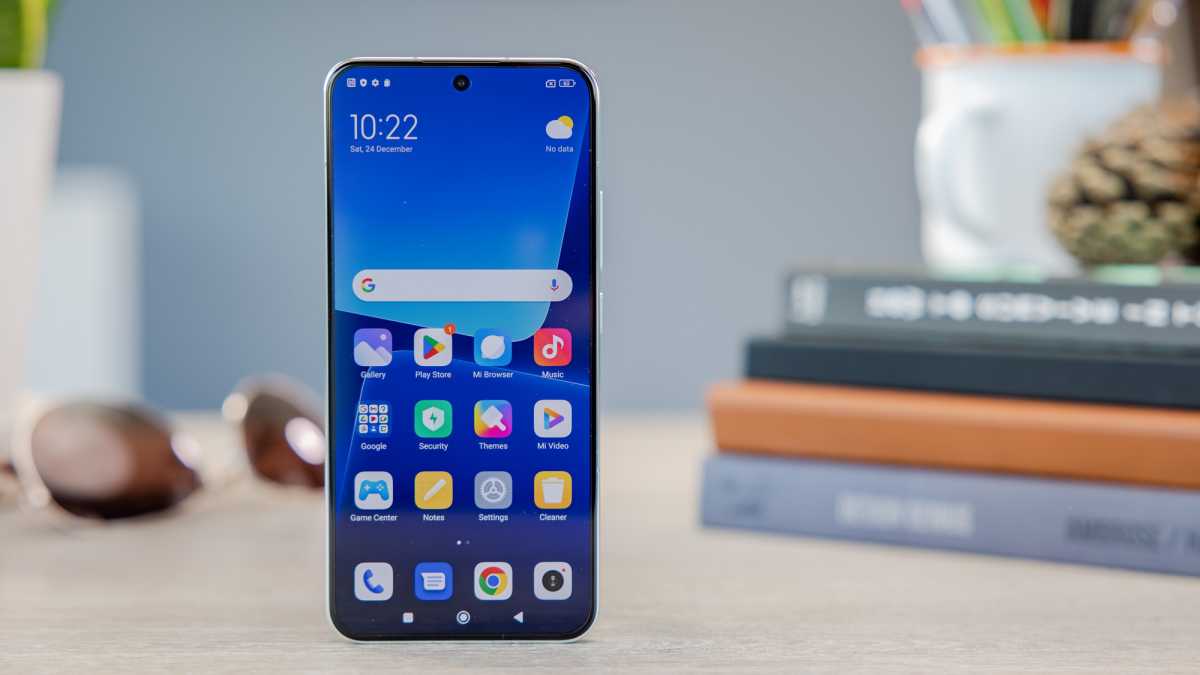Expert’s Rating
Pros
- Small and stunning design
- Powerful Snapdragon 8 Gen 2 processor
- Excellent main camera
Cons
- Middling battery life
- Cluttered OS
- Competitors offer more for the money
Our Verdict
The Xiaomi 13 has a compact, premium build and impressive day-to-day performance, but the price means it faces fierce competition from Samsung, Apple and Google.
Price When Reviewed
Not available in US
Xiaomi’s next generation of phones are here, kicking off a wave of new devices at MWC 2023.
The regular Xiaomi 13 reviewed here is the middle option, priced between the Xiaomi 13 Pro and the Xiaomi 13 Lite. However, make no mistake – this is still a premium phone, with a high-end build and some impressive cameras.
Like the generation before, the Xiaomi 13 comes in a slightly smaller size than the Pro variant, so it is ideal for anyone not looking for a ginormous phone. However, is it a flagship knockout? I’ve spent some time with the Xiaomi 13 – here is my experience.
Design & build
- Only black version available in UK
- Stunning glass build
- IP68 rating
Make no mistakes, the Xiaomi 13 has a gorgeous build. It comes in three colour options: black, white, and green, which I tested.
I have a love of pastel green and blue phones, but regardless, the Xiaomi 13 got lots of compliments during my time testing it. It has a 2.5D glass back with a lovely sheen – though it does pick up fingerprints quite easily. This is complimented by a turquoise aluminium alloy chassis.
Sadly, only the black version is available in the UK, which is a shame considering this unique colourway.
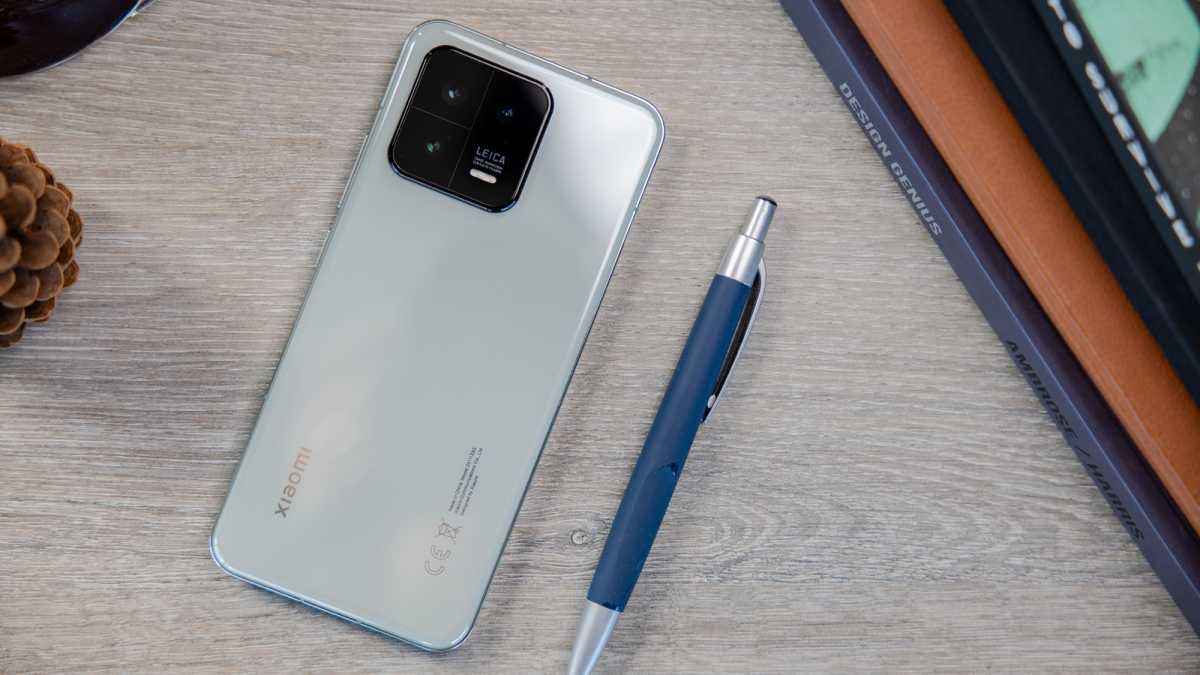
Dominik Tomaszewski / Foundry
The phone is 7.9mm thick and weighs 189g. This isn’t the slimmest flagship phone I’ve seen, but I’ll take it for the premium body. The curved edges also make it a comfortable device to hold.
It’s one of the more compact flagships on the market right now at just 152mm long. As someone with smaller hands, this is a welcome relief – and it’s nice to not have to worry about the phone half-hanging out of my jean pocket.
The Xiaomi 13 comes with an IP68 rating, which means it can withstand being submerged in water and is protected from getting dust inside. This is a welcome step-up from the Xiaomi 12, which has no IP rating whatsoever.
The phone has a USB-C slot for charging, but no 3.5mm headphone jack – a common theme in flagship phones. It only has one SIM port, and no micro-SD card slot.
Make no mistakes, the Xiaomi 13 has a gorgeous build
Screen & speakers
- 6.36in AMOLED display
- FHD+ resolution
- Dual speakers with Dolby Atmos
The Xiaomi 13 has a 6.36in AMOLED display, protected by Corning Gorilla Glass 5. It has a 2400 x 1080 resolution, along with support for Dolby Vision and HDR10+.
It has excellent clarity and is great for watching YouTube videos and streaming shows on the likes of Netflix. If you want a higher resolution than the FHD+ here, then it’s worth considering the 13 Pro, which comes with a WQHD+ panel.
Colours are vivid and striking, and Xiaomi claims that the phone reaches a peak brightness of 1900 nits. In real terms, I was able to use it under bright sunlight with minimal glare, and still see everything quite clearly.
The phone defaults to a dynamic refresh rate out of the box, but you can choose to have it permanently on either 60Hz or 120Hz. You can also toggle which apps use the higher refresh rate.
For gamers, the Xiaomi 13 has up to 240Hz touch sampling rate, and a dedicated Game Space mode which allows you to choose between various settings depending on your preferences, including a power-saving mode, a balance mode, a high-quality mode or a custom one.
Haptics on the phone are short and clipped with decent feedback, and don’t make too much noise. There is an under-display fingerprint sensor for biometrics, and I found no issues with this at all. You can also use face recognition, or a traditional password or PIN should you prefer.
The phone features dual speakers with Dolby Atmos support. Sound is loud and punchy, making it great for podcasts and videos. For music, there is lots of depth and some bass, but it is not quite as impressive as some other expensive devices like the Samsung Galaxy S23 Ultra.
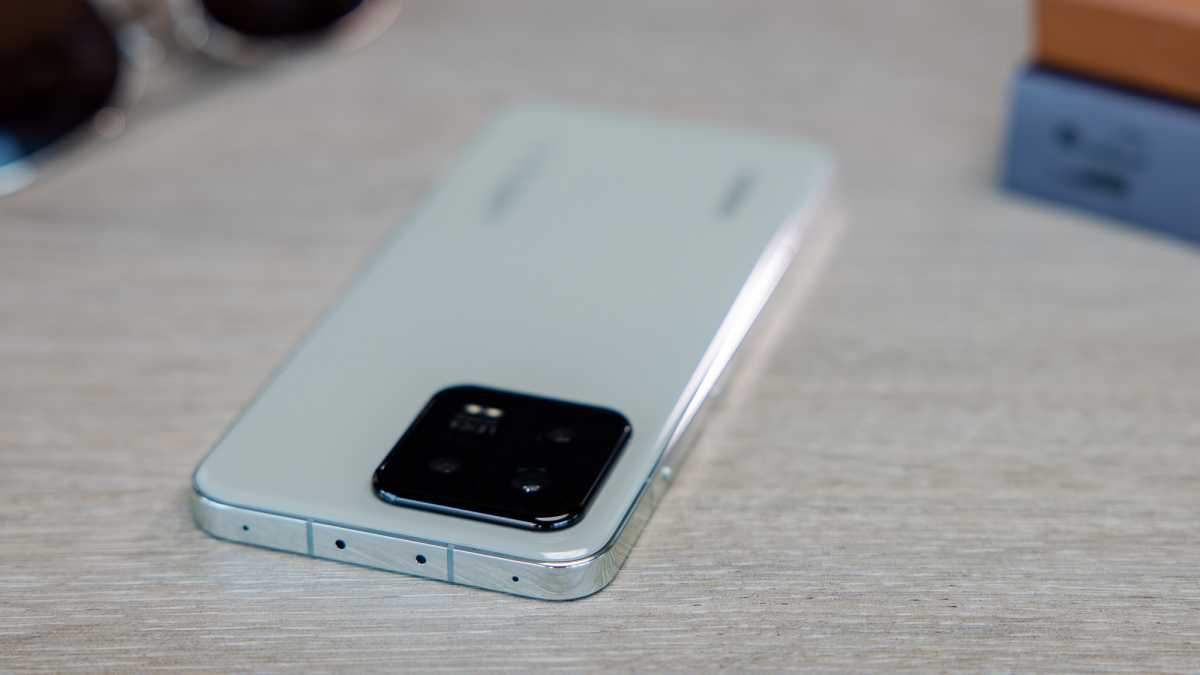
Dominik Tomaszewski / Foundry
Specs & performance
- Snapdragon 8 Gen 2
- 8GB/12GB RAM
- 128GB/256GB storage
A flagship phone deserves a flagship chip, and so the Xiaomi 12 runs on the Snapdragon 8 Gen 2. This is paired with either 8GB/12GB RAM, and 128GB/256GB of storage. UK buyers can only get the 8GB/128GB variant.
As you might expect, performance is solid on the phone. I multitasked between streaming, social media and calls with no stuttering whatsoever. It is fast, smooth and should be quite future proof for most tasks, even heavy-duty ones.
This is also reflected in our benchmarking tests, with the phone outperforming all other Android models tested so far on Geekbench 5 (including the Xiaomi 13 Pro), and only being bested by the monster scores set by the A16 processor on Apple’s iPhone 14 Pro. Clearly, the Snapdragon 8 Gen 2 is optimised well for this phone.
Gaming-wise, I was able to run the high-demand Genshin Impact on medium settings without it overclocking or stuttering. For reference, that was the same setting that I ran on the dedicated gaming phone, the Vivo iQoo 9 Pro Legend.
The Xiaomi 13 only got slightly warm during the gaming session – this is likely due to the vapour cooling heat dissipation sink which covers almost half of the body of the phone.
Connection wise, the Xiaomi 13 offers Wi-Fi 7 support, as well as Bluetooth 5.3.
Clearly, the Snapdragon 8 Gen 2 is optimised well for this phone

Dominik Tomaszewski / Foundry
Camera & video
- Strong 50Mp main lens
- Up to 3.2x optical zoom
- No so impressive wide-angle camera
Once again, Xiaomi has opted for a 50Mp main snapper, but this time around it has partnered with Leica. It uses a Sony IMX800 sensor, the same seen on the Honor 70, as well as a f/1.8 aperture and optical image stabilisation (OIS).
What this results in is clear, crisp and detailed photos. It is easy to get a great looking photo, both indoors and outdoors. Textures such as clothes and animal fur look realistic, whilst tones are bright without feeling washed out or oversaturated.
The addition of Leica image processing means that you can choose between Vibrant and Authentic finishes. The former has a wider dynamic range and boosted tones, whilst the latter is slightly less vivid. This is especially apparent in night shots – see the comparison between the two filters below:


I preferred using the Vibrant option, as details pop much better on the screen, but this comes down to taste.
The automatic bokeh effect on the portrait mode is a little on the strong side for my liking but this can be adjusted before taking a shot. Despite the amount of blur, it did a reasonable job of not fogging up errant strands of hair, like I find on some cheaper phone cameras.
There’s also a 10Mp telephoto camera with a f/2.2 aperture, which has up to 3.2x optical zoom range. This provides extremely clear shots, without compromising on colours or quality. You can digitally zoom up to 30x, but the images become much more blurred.
The 12Mp wide-angle camera doesn’t have the same wow factor as the others, which comes with a f/2.0 aperture and 120-degree field of view. Colours become more insipid, whilst shadows lose their depth. On certain angles, this camera can make some subjects look a little distorted.
Night mode lifts subjects very well, with details visible even in very dark conditions. However, the sky does take on a slightly unnatural blue tinge that I don’t get on other phones like the Vivo X70 Pro.
On the front, there is a 32Mp front-facing camera with a f/2.0 aperture. The blur effect on this camera is more inaccurate than it is on the main camera, with some clumps and strands of hair smudging into the background. Nonetheless, I was able to get some decent selfies with this phone, including a rather impressive shot taken at night.
The selfie camera fairs best outdoors, and that includes at night. Some of the poorest shots were taken inside with low lighting, which resulted in softer details and dull colours.
The Xiaomi 13 can record in 8K at 24fps, 4K up to 60fps, 1080p up to 60fps and 720p at 30fps. You can enable either steady video or ultra-steady video, though the latter has a slightly strong and unnatural effect.
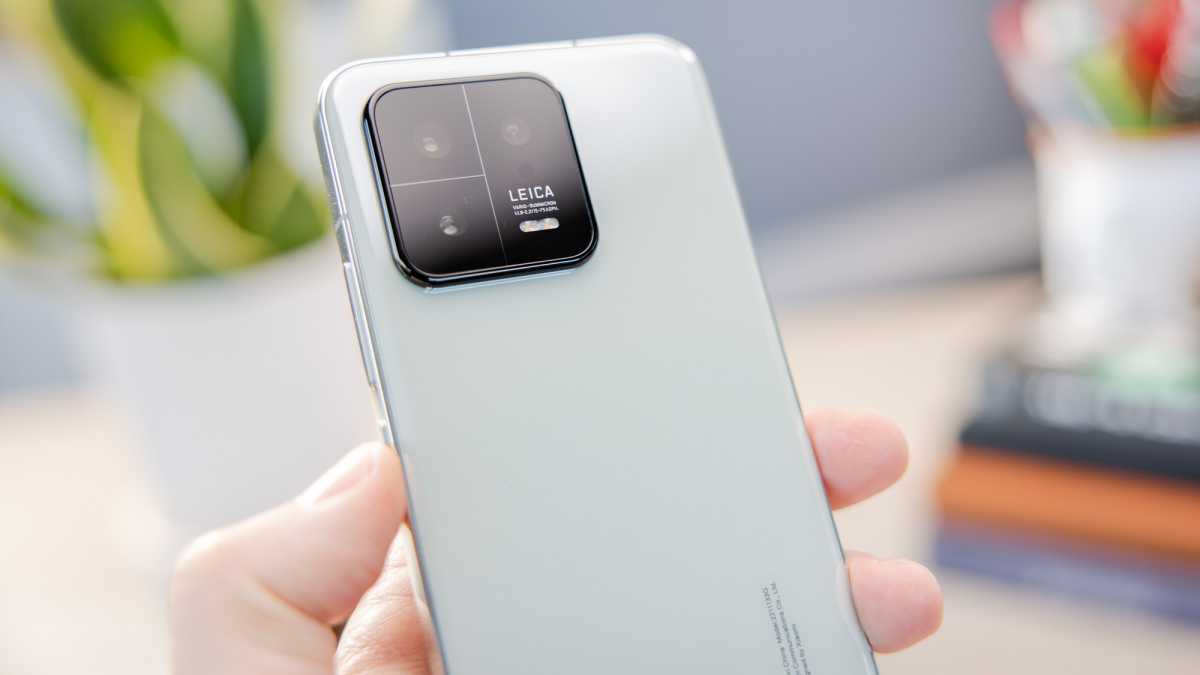
Dominik Tomaszewski / Foundry
Battery & charging
- One-day battery life on average
- 37W fast-charging
- Wireless and reverse wireless charging available
The Xiaomi 13 comes with a 4500mAh battery, the same size seen on the previous generation Xiaomi 12.
The battery was one of the so-so points of the Xiaomi 12, and sadly this is the same case here. On average I’d get about a day’s use out of the phone – watching videos, listening to podcasts, scrolling through Twitter and taking calls.
If I whacked up the refresh rate to 120Hz and used the phone heavily (such as having a stream running for hours on end), then the phone would drain even quicker than this. That said, it did last longer in our official PCMark 10 battery test than the Xiaomi 12, taking 11 hours and 40 minutes to drain completely.
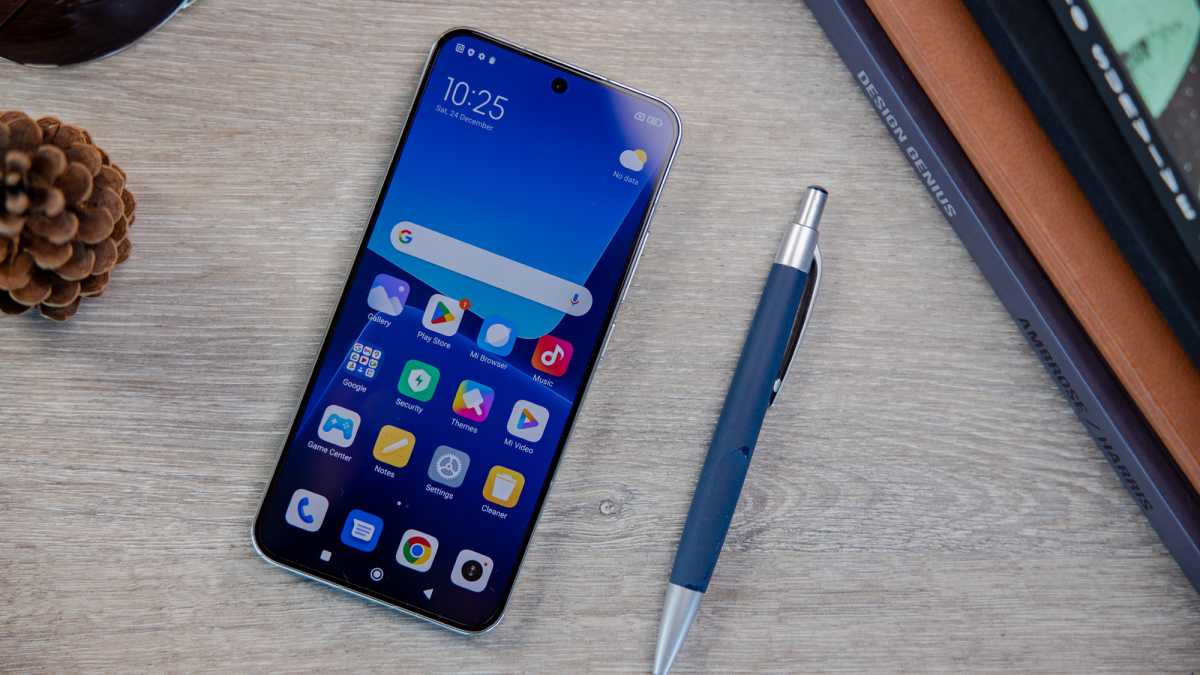
Dominik Tomaszewski / Foundry
Fortunately, charging is quite speedy with the included 67W brick. This juices the phone from flat to 87% in 30 minutes, but the phone did get noticeably hot. Keep in mind that the pricier Xiaomi 13 Pro comes with even faster speeds with a 120W charger included in the box.
The Xiaomi 13 has support for 50W wireless turbo charging, though a charger is not included in the box. You also get 10W reverse wireless charging.
Software & updates
- MIUI 14
- Software bloat
- Some apps not optimised for the OS
The Xiaomi 13 runs on MIUI 14 based on Android 13, the latest version of this software. If you’ve never used a Xiaomi device before, then the OS is one of the most jarring elements.
The app bloat isn’t quite as bad as what I’ve found on other phones such as the budget Poco X5. Nonetheless, you’ll find multiple browser applications, Xiaomi-specific versions of calendars, calculators and other apps, and just generally more space taken up than is necessary straight out of the box.
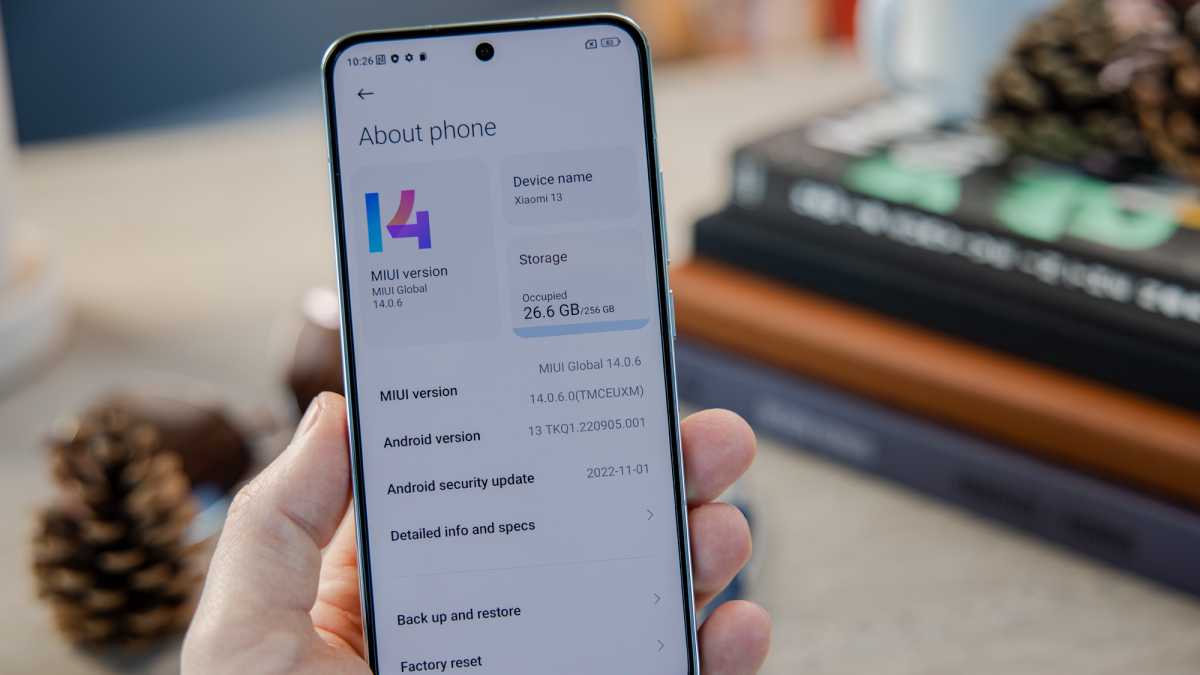
Dominik Tomaszewski / Foundry
Navigation isn’t quite the same as what you’ll find on stock Android, and searching for things in the settings can be confusing. Apple users will find some familiarity with shortcuts, as the quick settings is accessed from swiping down from the top right, whilst notifications show up by dragging down on the left.
I also noticed that the Instagram app isn’t properly optimised for MIUI. On multiple occasions I found that the stories bar would be blacked out, which meant that the names of users didn’t show up (though the icons did). Online forums indicates that this is a common problem with Xiaomi phones.
If you’ve never used a Xiaomi device before, then the OS is one of the most jarring elements
In general, MIUI isn’t the most user-friendly Android skin out there, and issues with popular apps may prove an annoyance to some.
Xiaomi typically commits to three years of OS updates and four years of security patches. Whilst this is better than some manufacturers, it isn’t quite as generous as Samsung, which promises four years of software updates.
Price & availability
The Xiaomi 13 costs £849, and goes on sale in the UK on 14 March 2023 via Xiaomi’s official store, as well as on Currys and Argos.
This is a £100 price jump from the previous generation, Whilst we can take inflation into account, this puts it as the same price as the iPhone 14, the Samsung Galaxy S23 and the Google Pixel 7 Pro.
Not only are these more in-demand brands, but they also offer more user-friendly software. Plus, both the iPhone and the Pixel offer much better battery lives as well during our tests.
If you’re trying to decide between the Xiaomi 13 and the Xiaomi 13 Pro, then the latter offers something more unique with the 1in Sony IMX989 sensor – the biggest around at the time of writing.
In addition, it offers better day-to-day battery life and faster charging speeds. Overall, it’s the more appealing choice for both Xiaomi buffs and smartphone photography enthusiasts, but it will set you back £250 more.
For further options, check out our rankings of the best phones, as well as the best Android phones and best Xiaomi phones.
Verdict
On the…
